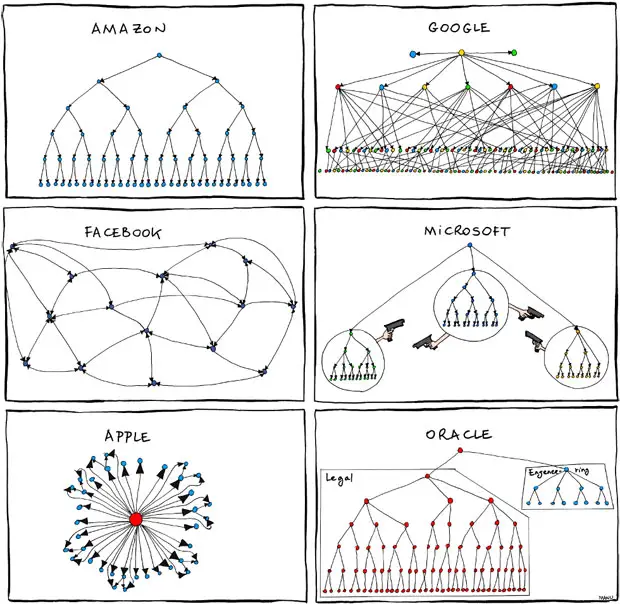Joining Meta: Meta 8 Months Later – Part III
This is the third post in my “Meta: 8 Months Later” series. The first one is here. In these posts, I reflect on the onboarding plan I made when joining Meta — and how it actually played out.
In the first two posts I’ve been talking about how I’ve been following my onboarding plan, where it came to technical mastery and strategic influence respectively. In this post, I wanted to talk about Meta’s unique self-organisation model, how it works, and why it might fail at times.
In a classic Big Tech organisation (Google, Microsoft, etc.), each business unit has its own scope and is responsible for it – this is Management 101. When inevitably, at some point, scopes overlap, this may result in turf wars, which are ultimately counterproductive, and often leadership has to step in, mediating things. Sometimes this results in a reorg, with scope being reallocated and team boundaries redrawn, and things are back to where they should be — for a short while, anyhow.
Meta is different. When, upon joining, I was told that it’s not a hierarchy, but a social graph, I took this as a joke.

After all, it’s been years since Manu Cornet — Googler back then — published his wonderfully apt infographic you can see above. Well, the joke was on me — this is really how Meta operates.
At Meta, it is perfectly normal to have something very important done intentionally in parallel by several teams, approaching the problem from different points of view, to ensure that most important stuff gets done, right.
As an example, Integrity or Cross-Meta Security might be approaching something from the protecting-user standpoint, whereas omnipotent Growth will be looking at this very problem from the point of view of retaining existing users, getting them engaged on the platform, and bringing new ones.
To be entirely honest with you — and perhaps myself — I am still struggling with this to a certain extent, but as someone very smart once said to me in an internal Workplace post:
Meta does not operate as hierarchy, it’s more like a dynamic and weighted graph. Finding the centres of grvity to influence is part of (if not the) job [for a senior engineering leader].
Bizarre, isn’t it? It’s bananas for outside, but somehow Meta works, ships products, and - among other things - protects its users and does it reasonably well, so there must be something in this idea after all.
If you made it this far — thank you. Writing this series has been as much about trying to make sense of my own journey as it was about sharing it. A few people pinged me, both internally and externally, after the earlier posts and said they found them helpful — I hope this one is useful too, or at the very least, a little illuminating.
This wraps up the “Meta: 8 Months Later” mini-series — assuming I don’t wake up six months from now writing “Meta: 14 Months Later – I Was Wrong About Everything.” That said, the learning definitely isn’t over, and neither (I suspect) is the writing.
For now though, I’ll leave it here. Back to the social graph.